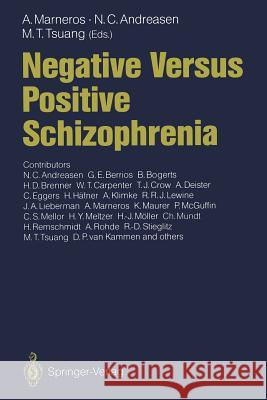Negative Versus Positive Schizophrenia » książka
Negative Versus Positive Schizophrenia
ISBN-13: 9783642768439 / Angielski / Miękka / 2011 / 466 str.
The positive versus negative distinction of schizophrenic disorders has pro- moted ongoing research. Phenomenology, psychopathology, biology, genet- ics, pharmacological and nonpharmacological treatment, psychosocial and longitudinal research: all have found a new focus of interest. This volume attempts to provide an unbiased picture of the status of American and Eu- ropean knowledge regarding the positive/negative distinction. Researchers from North America and Europe describe the relation of modern concepts of positive and negative symptomatology to the original models of Rey- nolds and Jackson. Integrating phenomenological, genetic, and biological factors, the authors depict current methods of assessing positive and nega- tive symptomatology, differentiating between primary and secondary symp- tomatology, and using pharmacological and nonpharmacological treatment. The stability of positive and negative symptoms over time and evidence for the occurrence of separate positive and negative episodes over a long-term course of schizophrenia are extensively discussed in terms of their implica- tions on the positive/negative construct. The relevance of the positive/nega- tive dichotomy to child and adolescent schizophrenia is also debated. The main aim of this book is not to advocate a single concept and present only arguments supporting it, but to discuss important controversies. Prob- lems concerning a concept cannot be solved by ignoring them. However, unanswered questions may be resolved through discussion, debate, and con- structive compromise.











